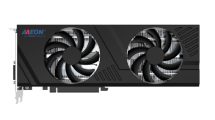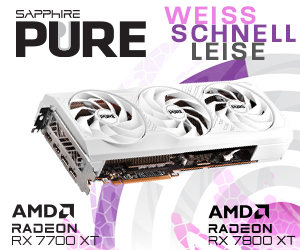Temperature comparison – before/after
I integrated the RTX 3090 with the Aurora GPX-N into the existing custom loop of my daily system. To measure the temperatures I use the software logging of the tool HWinfo on the one hand and on the other hand temperature sensors to record water and room temperature also over a test run. This allows me to form a reliable delta over the entire test run, even without a chiller, and draw meaningful conclusions about the performance of the water block.
As mentioned at the beginning, the 3DMark Port Royal is used as a benchmark, which represents a good balance between GPU and memory load and is thus representative for many gaming titles. As already mentioned, the graphics card was overclocked with +100 MHz on the GPU, +1000 MHz on the memory and 90 °C respectively 115 % temperature and power limit, with the tool MSI Afterburner.
As always, you can find a complete listing of the hardware in the following table:
| Test system | |
|---|---|
| Hardware: |
|
| Cooling: |
|
| Housing: |
|
| Periphery: |
|

To the diagram of the absolute temperatures with the Founders Edition cooler listed at the beginning, I now also have the variant Delta to Ambient, i.e. difference to the room temperature. You can also see the inertia in the fan curve and the very high temperatures of the memory. In environments with higher room temperatures towards 30°C, the memory could start to throttle, i.e. clock itself down, even in normal gaming already.

With the Alphacool Eisblock GPX-N the temperatures look completely different, and these are the absolute values, not the relative ones. So with the Eisblock, the memory the absolute temperature is even lower than the relative temperature with the stock cooler. That’s impressive! Thus, we are also far from the 110 °C TJmax of the memory. GPU and GPU hot spot temperatures are also lower by quite a bit, though not in the same proportion, as the Founders Edition still did a comparatively better job for this.

If we now calculate the delta the room temperature again, we can compare the Founders Edition air cooler with the GPX-N Eisblock in combination with the custom loop. From about the 400 second mark, the temperatures of both coolers leveled off and we see a before-after on the GPU temperature of about 46 to about 27 °C, so 19 Kelvin improvement. With the GPU host spot, the picture is identical with about 60 to 41 °C and also 19 Kelvin improvement. In the case of the memory, however, we dropped from 76 to 52 °C and thus achieve a whopping 24 Kelvin lower temperatures.

With the water temperature, which I had already included in the previous two diagrams, a delta can now also be formed, which logically did not exist before with the air cooler. This way we can interpret how well the water cooler itself really performs, detached from the other water cooling components, and possibly draw comparisons to other water blocks in the future. Here, the GPU settles at 19 °C and the memory at 44 °C delta to the water temperature. Both are neat and really quite good.

As a result of the lower temperatures, the GPU now naturally boosts highes, achieves an average of 100 MHz and thus about 5% more clock speed than with the standard Founders Edition cooler. That’s impressive, too. Now you could of course try to convert the gained headroom back into performance, but unfortunately the power limit of 400 W is the hard limit here. By the way, there will be more on this soon in a follow-up article where I plan to modify the shunt resistors to trick the card’s power measurement – at least in theory. You can be curious whether this then also worked out in practice.

































Kommentieren